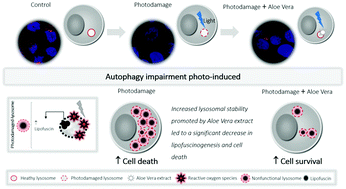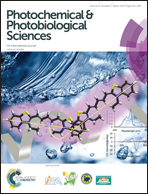Mechanism of Aloe Vera extract protection against UVA: shelter of lysosomal membrane avoids photodamage†
Abstract
The premature aging (photoaging) of skin characterized by wrinkles, a leathery texture and mottled pigmentation is a well-documented consequence of exposure to sunlight. UVA is an important risk factor for human cancer also associated with induction of inflammation, immunosuppression, photoaging and melanogenesis. Although herbal compounds are commonly used as photoprotectants against the harmful effects of UVA, the mechanisms involved in the photodamage are not precisely known. In this study, we investigated the effects of Aloe Vera (Aloe barbadensis mil) on the protection against UVA-modulated cell killing of HaCaT keratinocytes. Aloe Vera exhibited the remarkable ability of reducing both in vitro and in vivo photodamage, even though it does not have anti-radical properties. Interestingly, the protection conferred by Aloe Vera was associated with the maintenance of membrane integrity in both mimetic membranes and intracellular organelles. The increased lysosomal stability led to a decrease in lipofuscinogenesis and cell death. This study explains why Aloe Vera extracts offer protection against photodamage at a cellular level in both the UV and visible spectra, leading to its beneficial use as a supplement in protective dermatological formulations.


 Please wait while we load your content...
Please wait while we load your content...